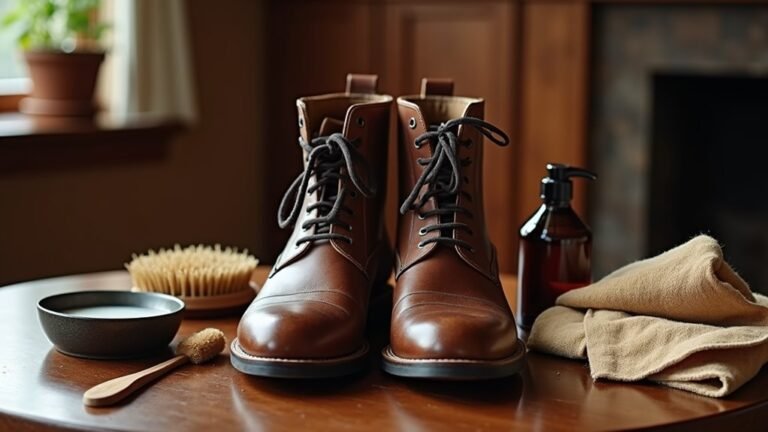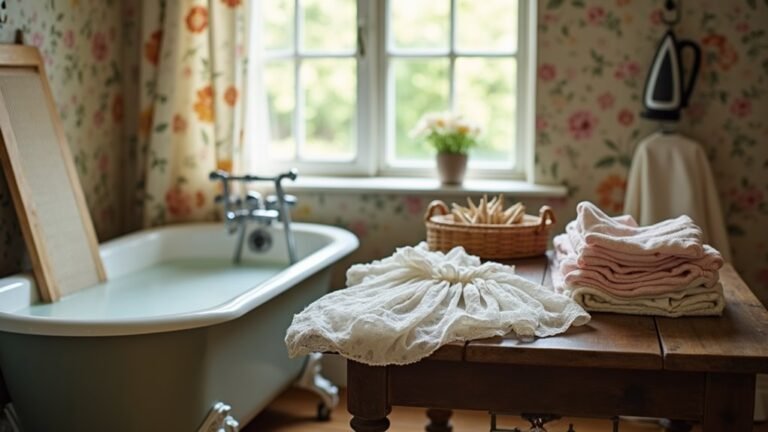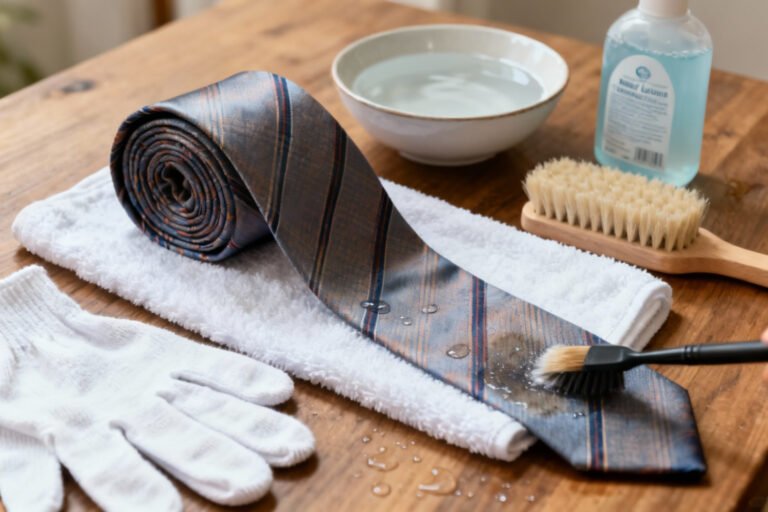Tarnished jewelry doesn’t have to stay dull forever – there’s an easy fix using items you probably already have at home. When silver and other metals sit unused in jewelry boxes, they can get dark and lose their shine. According to Susan Lewis, a metalsmith at the Gemological Institute of America, “The simplest way to clean most tarnished jewelry is with warm water and mild dish soap. For silver specifically, baking soda and aluminum foil can work wonders through a natural chemical reaction.” This straightforward cleaning method can make your favorite pieces sparkle again without spending money on expensive cleaners. Let’s look at how everyday household items can bring life back to your treasured jewelry pieces.
Restore Jewelry’s Natural Shine

When your favorite jewelry starts to lose its luster, there’s no need to worry – restoring that beautiful shine is easier than you might think.
We can use simple household items as a natural jewelry cleaner instead of harsh chemicals. For sterling silver and other pieces, try combining aluminum foil, baking soda, and boiling water, or soak items in warm water with salt and baking soda.
Let’s explore what we can do and what we should avoid when cleaning our cherished tarnished jewelry.
We’ll walk through the essential steps, from gathering supplies to achieving that perfect shine, while keeping our pieces safe from damage.
As we tackle this project together, you’ll discover that restoring your jewelry’s brilliance is both satisfying and straightforward with the right techniques and precautions.
Things to Do When Cleaning Tarnished Jewelry
Cleaning tarnished jewelry doesn’t have to involve expensive solutions or professional services when you can use a simple yet effective method at home. This chemical reaction-based cleaning process utilizes common household items to restore shine to your precious pieces while being gentle enough to prevent damage to the metal surfaces.
- Line a bowl with aluminum foil, shiny side facing up, creating a proper surface for the chemical reaction.
- Place tarnished jewelry pieces on the foil, ensuring they make direct contact with the aluminum.
- Sprinkle an even layer of baking soda over the jewelry items to facilitate the cleaning process.
- Pour boiling water carefully over the jewelry until completely submerged.
- Allow items to soak for 5-10 minutes while the chemical reaction removes tarnish.
- Remove jewelry using tongs or a spoon to avoid burning yourself.
- Rinse thoroughly with cool water to remove any residual baking soda.
- Pat dry immediately with a soft, lint-free cloth to prevent water spots.
- Store properly in a dry place to maintain the newly restored shine.
Things to Avoid When Cleaning Tarnished Jewelry
Cleaning tarnished jewelry requires a delicate touch and careful consideration of the methods and materials used. Using improper cleaning techniques or harsh substances can permanently damage your precious pieces, leading to scratches, corrosion, or weakened metal structure that may be impossible to repair.
- Steel wool or abrasive cloths – These materials create deep scratches on jewelry surfaces that can’t be reversed.
- Harsh chemicals (bleach, ammonia) – These substances eat away at metal and can permanently damage or discolor stones.
- Vigorous scrubbing – Aggressive cleaning motions cause surface scratches and can loosen stone settings.
- Toothpaste – Contains abrasive particles that create microscopic scratches on jewelry surfaces.
- Extreme temperatures – Heat and cold can weaken metal structure and potentially crack stones.
- Prolonged moisture exposure – Extended contact with water accelerates tarnishing and can damage certain types of stones.
- Commercial silver dips – While effective, these harsh solutions can over-clean and remove intentional antiquing or patina.
- Rubber gloves – The sulfur in rubber can accelerate tarnishing when in contact with silver jewelry.
- Paper towels – Their rough texture can leave tiny scratches on delicate jewelry surfaces.
Steps
Cleaning tarnished jewelry requires a gentle yet effective approach that relies on chemical reactions rather than physical scrubbing.
The aluminum foil method creates a safe oxidation process that removes tarnish without damaging delicate surfaces, while natural alternatives like lemon juice provide options for lighter cleaning needs.
Following the proper steps guarantees your jewelry regains its original luster without risking damage to precious metals or stones.
Step 1: Line a bowl with aluminum foil, shiny side up
Step 2: Place tarnished jewelry on the foil, guaranteeing pieces don’t overlap
Step 3: Sprinkle baking soda generously over the jewelry
Step 4: Pour boiling water into the bowl until jewelry is completely covered
Step 5: Allow jewelry to soak for 5-10 minutes
Step 6: Remove jewelry with tongs and rinse thoroughly with cool water
Step 7: Dry each piece completely with a soft, lint-free cloth
Step 8: Buff gently to restore shine
Step 9: Store in a dry, airtight container to prevent future tarnishing
Final Thoughts
Although maintaining jewelry’s pristine appearance may seem challenging, we’ve seen how simple household items can effectively restore tarnished pieces to their original beauty.
By using gentle cleaning methods that rely on chemical reaction rather than abrasive scrubbing, we can safely clean our jewelry pieces while preventing damage.
Remember to always dry thoroughly and consider preventive measures like rhodium plating for long-lasting shine.

Maintaining the beauty of your jewelry doesn’t have to be complicated or expensive. With simple household items like aluminum foil, baking soda, and warm water, you can safely remove tarnish and restore your pieces to their original shine.
While professional cleaning services are available, these DIY methods offer effective and gentle solutions that won’t damage your precious items. Remember to clean your jewelry regularly and store it properly to prevent excessive tarnishing in the first place.
Don’t let tarnished jewelry languish in your collection – take action today to restore its sparkle. Whether you choose the aluminum foil method, natural solutions like lemon juice, or invest in rhodium plating for long-term protection, your jewelry can maintain its lustrous appearance for years to come.
With proper care and regular maintenance, you’ll be able to enjoy and wear your favorite pieces with confidence.






